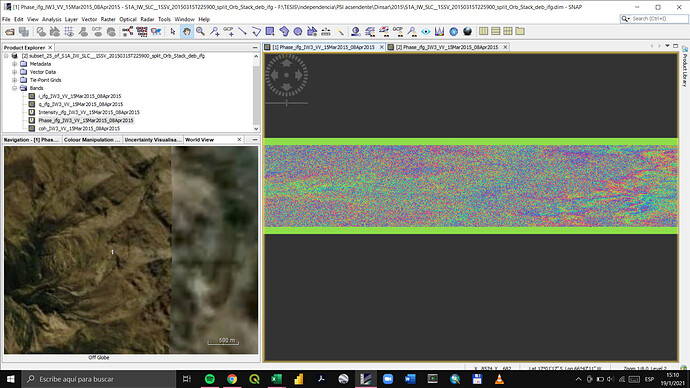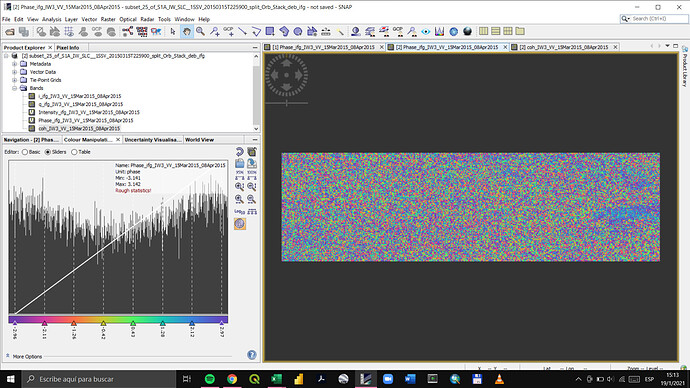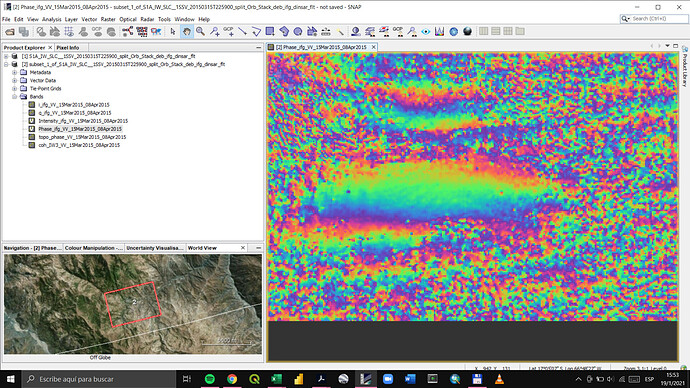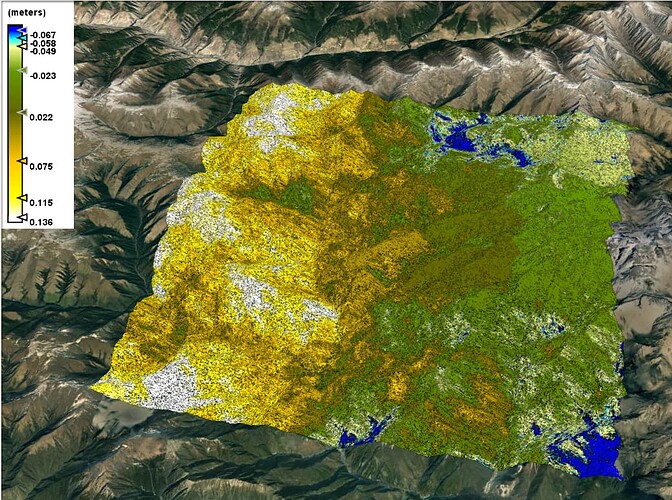ese es el interferograma de todo y de mi zona de interés es
Este es el interferograma de mi zona de interés
you could consider multi-loking the interferogram, followed by the Goldstein filter. Yet, the urban area (second screenshot) is entirely surrounded by noise.
The only thing you can extract here are variations within the urban area, but not the urban area in total, because there is no reference point outside this urban area which could be used.
Please have a look at how the interferograms look in some DInSAR studies and how these are used to identify subsidence. I’m afraid, looking at small patches of isolated pixels will barely bring insights.
You’re right, apply a filter and this is what my analysis area looks like, I’ll see how the results are. Thanks a lot. Although I still have the doubt of the range of the results that I will obtain.
Hello meli, I am facing problem to get results like you, in my picture displacement is happening all over the region. it should be not like this, it should show movement only some parts not all over the region. can you please guide where is the problem. Thanks
maybe the quality of your inteferogram was bad and unwrapping produced a random result?
Sir I have tried many times but no difference in reult.
I don’t see any fringes, so no, the phase quality is not good and it wouldn’t make sense to apply unwrapping on it.
You can see in this example how larger temporal baselines lead to a decrease in phase quality.
I used 2.5 years time (Dec-2014 and July-2017) interval between two sentinel-1 images. In actual there are active landslides in that area of movement up to 100 cm/year, but I did not find such results by DInsar analysis. Sir which parameters should I choose to get meaningful result, Thanks for response.
Two years between two images leads to complete phase decorrelation. Traditional DInSAR is not designed for this.
Cannot recommend any parameters, sorry, this completely depends on your study case.
Have you seen these?
InSAR Principles: Guidelines for SAR Interferometry Processing and Interpretation (ESA TM-19)




